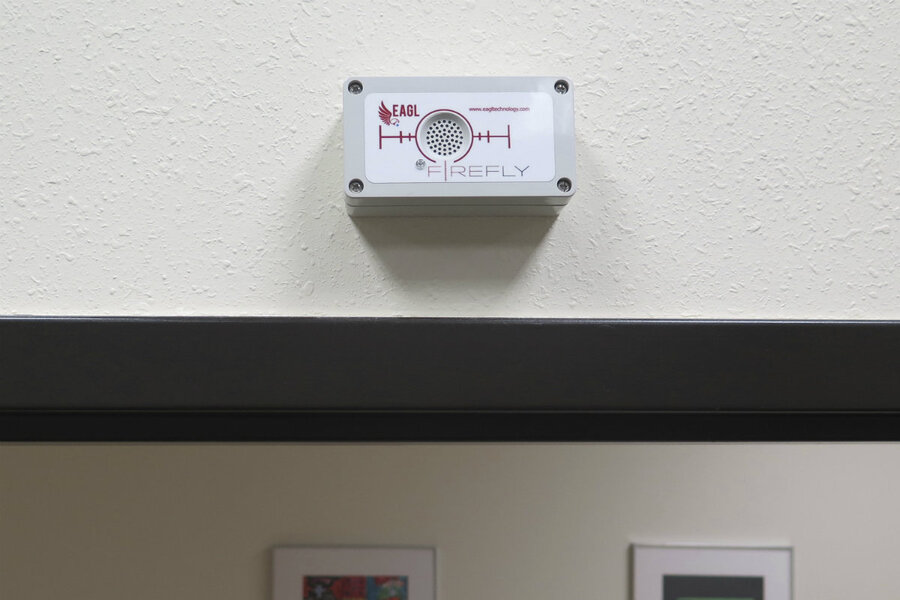Wisconsin schools to roll out gunshot detection sensors
Loading...
| Milwaukee
Wisconsin schools bracing for the next mass shooting are turning to gunshot-detecting sensors that police across the country rely on, hoping the technology will lead to faster response times if there's an active shooter.
The sensors are among various security upgrades schools are rolling out when classes resume this fall, using grants Wisconsin state lawmakers approved this year after the shootings in Parkland, Fla. Since then, the number of schools around the country expressing interest in using gunshot-detection systems has increased, according to New Mexico-based EAGL Technology, one of several companies that sell sensors.
The Kenosha Unified School District, the first in Wisconsin to be approved for grant funding, plans to use $384,000 of its nearly $900,000 award to install sensors from EAGL at its 43 schools. The system is designed to alert police within seconds of shots being fired and activate surveillance cameras near their location to live to stream the scene to authorities. The sensors can also lock doors after gunshots.
"The premise behind what we're trying to do here is to get our local law enforcement to us as fast as possible," said district spokeswoman Tanya Ruder.
Kenosha and other schools that have received grant funding are also using the money to upgrade cameras and intercom systems and put protective film on windows so they won't shatter. So far, Wisconsin has awarded nearly $6 million to 53 school districts and individual schools for security upgrades and funding is still available. State lawmakers budgeted $100 million in grants when they approved the legislation in March.
Several schools and higher education institutions have made gunshot-detection sensors part of their security plans for several years now, but they haven't been universally embraced and aren't widely used yet.
"It wasn't really until Parkland that people woke up," said EAGL Technology co-owner Jennifer Russell, recalling that her pitch to schools "was still falling on deaf ears" when she began pitching the sensors two years ago.
The Pacific Northwest National Laboratory in Richland, Wash., designed the sensors and EAGL licensed the technology, first at Hermosa Elementary School in Artesia, N.M., in September. Now, Ms. Russell said about 50 schools nationwide are planning to start using it in the coming months, including a handful in Wisconsin. She said she couldn't identify the schools because she doesn't have their permission.
Some safety experts, however, see the technology as a costly expense that won't prevent shootings or even stop them immediately – no matter how quickly the sensors alert police.
"By the time the system goes into effect the horse is out of the barn," said Ken Trump, president of the Ohio-based National School Safety and Security Services, which provides training and consulting work. "We're seeing people sort of grasping for straws in an overall climate of what I call, 'Do something, do anything, do it fast and do it differently,' " he said.
Mr. Trump said schools should instead focus resources on mental health and behavioral intervention support, training for staff to evaluate threats, and making it easy for students to report suspicious activity.
Russell said the technology EAGL uses is more accurate than what has been available previously because the sensors don't confuse gunshots with other loud noises, such as fireworks. The sensors, small enough to hold in one hand, detect shots by their energy level and can determine the caliber of the firearm being used, Russell said. That, along with the live stream of what's happening, provides police with information they don't typically have going into an active shooter situation, she said.
"They don't know where the shooter is, they don't know what he looks like, they don't know what he has for a weapon, they don't know where he went ... it's chaos," she said.
California-based ShotSpotter, a system deployed by police in 100 cities, including Milwaukee, is also being used outdoors by 10 college campuses, said Ralph Clark, the company's CEO. He said his company is not interested in selling sensors to schools for indoor use because they're of greater value outdoors. About 2,320 schools are in areas covered by ShotSpotter nationally, according to the company.
"As tragic as these situations are, they are very rare," Mr. Clark said about mass shootings. "What's a lot less rare and more intermittent are those incidents that are just off campus that can result in people being hurt or killed."
This story was reported by The Associated Press.







